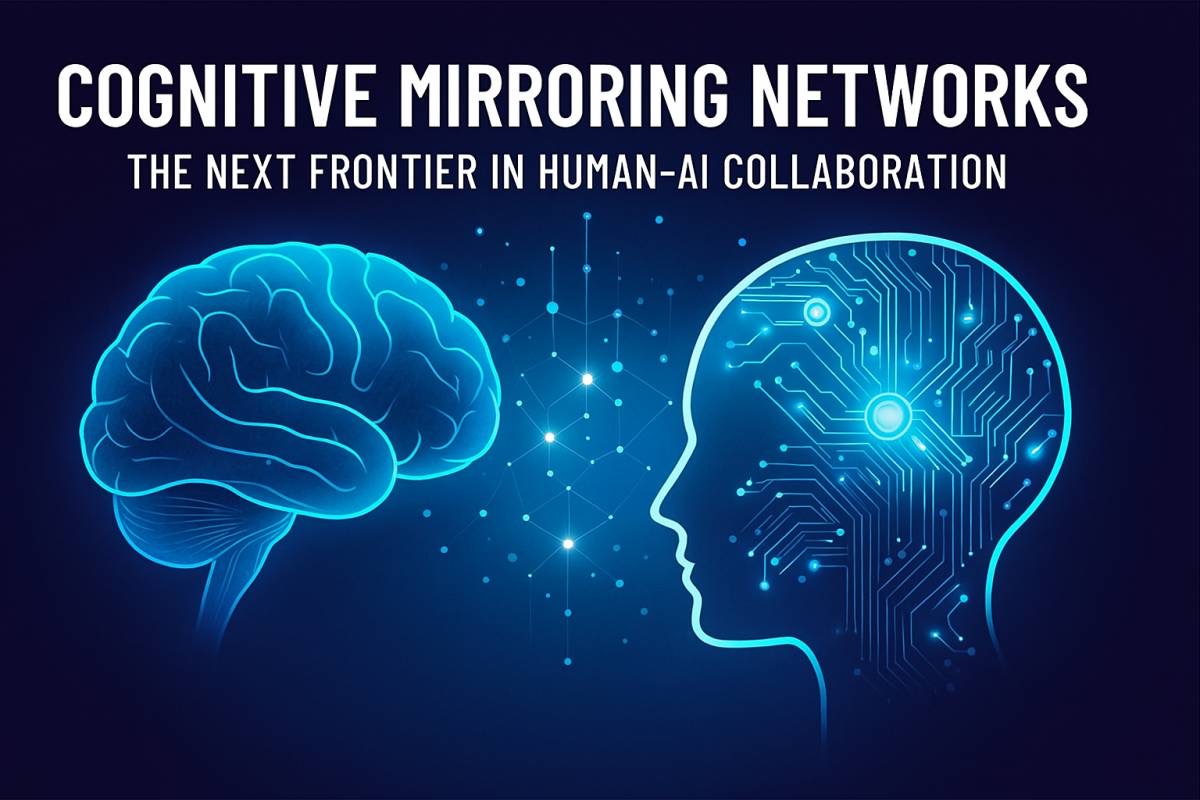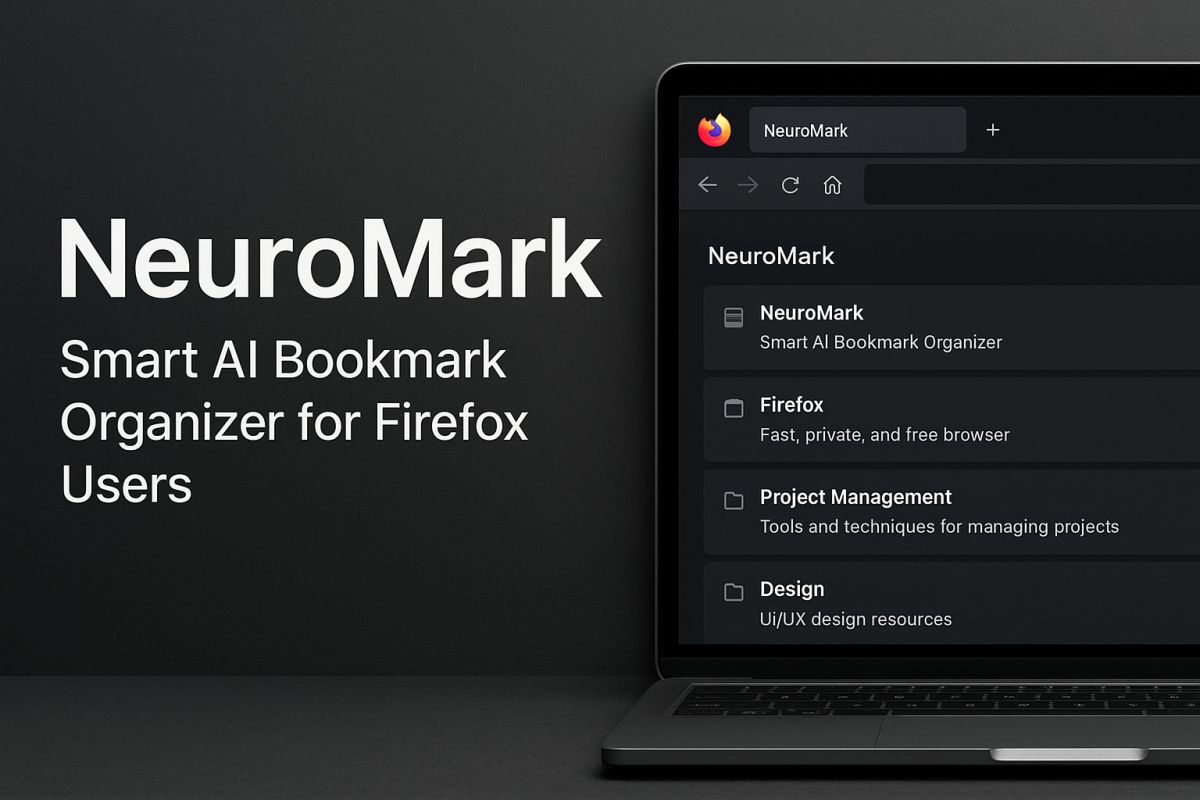Cognitive Mirroring Networks: The Next Frontier in Human-AI Collaboration

Cognitive Mirroring Networks (CMNs) are an emerging concept in AI that aim to replicate an individual’s unique cognitive patterns—how they think, learn, problem-solve, and make decisions—within an AI system. Unlike traditional AI models that are trained on large generic datasets, CMNs would build personalized cognitive blueprints of specific individuals, allowing AI systems to work as “cognitive twins.” This represents a major leap in human-AI collaboration, where machines no longer just respond to commands but think with us, in ways that align with our mental style.
Why This Concept Matters Now
AI has rapidly evolved from basic automation tools to intelligent agents like ChatGPT, capable of understanding context, language, and intent. However, current systems still operate as general-purpose thinkers, not personalized collaborators.
• They don’t learn your problem-solving style.
• They don’t mimic how you reason or make intuitive leaps.
• They can’t anticipate your unique way of approaching complex challenges.
Cognitive Mirroring Networks change that paradigm.
They could allow AI to internalize and mirror your thought process, enabling a deeper, more intuitive form of collaboration that feels like working with a second version of yourself.
How Cognitive Mirroring Networks Would Work
To understand CMNs, think of them as a multi-layered architecture combining several cutting-edge technologies:
1. Cognitive Profiling Layer
• Collects data about how a user thinks: decision trees, problem-solving sequences, emotional tone, risk preferences, and pattern recognition methods.
• Uses tools like Cognitive Modeling and Neuro-symbolic AI to translate mental behavior into machine-readable patterns.
2. Personal Knowledge Graph
• Builds a dynamic knowledge map of what the user knows, how they organize information, and which mental shortcuts they use.
• Updates constantly as the user learns new concepts or changes their thinking patterns.
3. Mirroring Engine
• Creates a personalized AI agent that simulates the user’s cognitive style, not just their preferences.
• Learns through continuous feedback loops and contextual reinforcement learning, aligning closer with the user’s decisions over time.
4. Ethical Control Layer
• Implements privacy safeguards, consent frameworks, and identity boundaries to prevent misuse of personal cognitive data.
• Critical for trust and safe deployment.
Potential Applications of Cognitive Mirroring Networks
CMNs could transform many fields by providing AI collaborators that “think like you”:
Education and Mentorship
• Students could have AI mentors that mirror the thinking style of their favorite teachers or industry experts.
• Personalized learning paths could adapt not just to skill level but to cognitive approach, improving retention and motivation.
Workplace Collaboration
• Professionals could clone their problem-solving style into a CMN, enabling teams to keep their “thinking legacy” alive even after they leave.
• Companies could use CMNs to capture and replicate the cognitive style of top innovators, helping train new employees faster.
Creative Industries
• Writers, artists, or designers could collaborate with AI that understands and extends their personal creative flow.
• CMNs could generate ideas in the creator’s unique voice, making them true co-creators instead of generic assistants.
Healthcare and Therapy
• Therapists could deploy CMNs that simulate their therapeutic style, expanding mental health support availability.
• Patients could receive personalized cognitive coaching that aligns with how they naturally think and feel.
Benefits of Cognitive Mirroring Networks
Implementing CMNs could offer unprecedented advantages:
• Hyper-personalization: AI aligns with your exact cognitive style.
• Enhanced decision-making: AI can anticipate your reasoning patterns, offering smarter suggestions.
• Time efficiency: Reduces friction between human intention and AI action.
• Knowledge continuity: Preserves intellectual capital of experts within organizations.
• Emotional alignment: Creates more natural and empathetic human-AI interactions.
Challenges and Ethical Considerations
While CMNs are promising, they also raise serious ethical and technical concerns.
Privacy and Consent
Mirroring a person’s cognition means capturing highly sensitive mental data. Strict privacy frameworks and user-controlled data ownership are essential.
Identity Boundaries
Where does “you” end and the mirrored version begin? CMNs blur identity lines, raising philosophical and legal challenges about personhood and intellectual property.
Over-reliance on AI Twins
If people depend too much on their cognitive twins, it may reduce critical thinking skills or promote mental laziness.
Technical Complexity
Current AI systems, even advanced large language models, cannot yet fully capture contextual, emotional, and intuitive reasoning. Creating CMNs will require breakthroughs in Artificial General Intelligence (AGI) research, neurosymbolicarchitectures, and real-time learning.
How CMNs Differ from Existing AI Models
| Feature | Current AI (e.g. ChatGPT) | Cognitive Mirroring Networks |
| Training data | Large, generic datasets | Individual’s cognitive patterns |
| Personalization | Surface-level (preferences, style) | Deep-level (reasoning and decision-making) |
| Adaptability | Limited | Continuous learning from user behavior |
| Collaboration style | Assistant-like | Cognitive twin |
| Emotional resonance | Contextual | Personalized and aligned |
The Road Ahead: Research and Development Directions
To make CMNs a reality, several research tracks must converge:
• Cognitive Data Capture: New methods to map and digitize human thought processes safely.
• Real-time Adaptive Learning: AI that evolves continuously without full retraining.
• Explainable AI Models: Users must understand why their cognitive twin makes certain decisions.
• Ethical Frameworks: Global policies on ownership, identity, and safe deployment of CMNs.
Early prototypes might appear within 5–10 years as hybrid systems combining current LLMs with cognitive modeling layers.
Final Thoughts
Cognitive Mirroring Networks could become the next big leap in human-AI collaboration, transforming machines from tools into trusted cognitive partners. Instead of learning how to work with AI, we could soon work alongside AI versions of ourselves—amplifying creativity, accelerating learning, and preserving human expertise for generations to come.
While many technical and ethical challenges remain, the potential of CMNs to redefine productivity, innovation, and human connection is too powerful to ignore. This is not just an evolution of AI—it’s the birth of a new paradigm of shared cognition.









